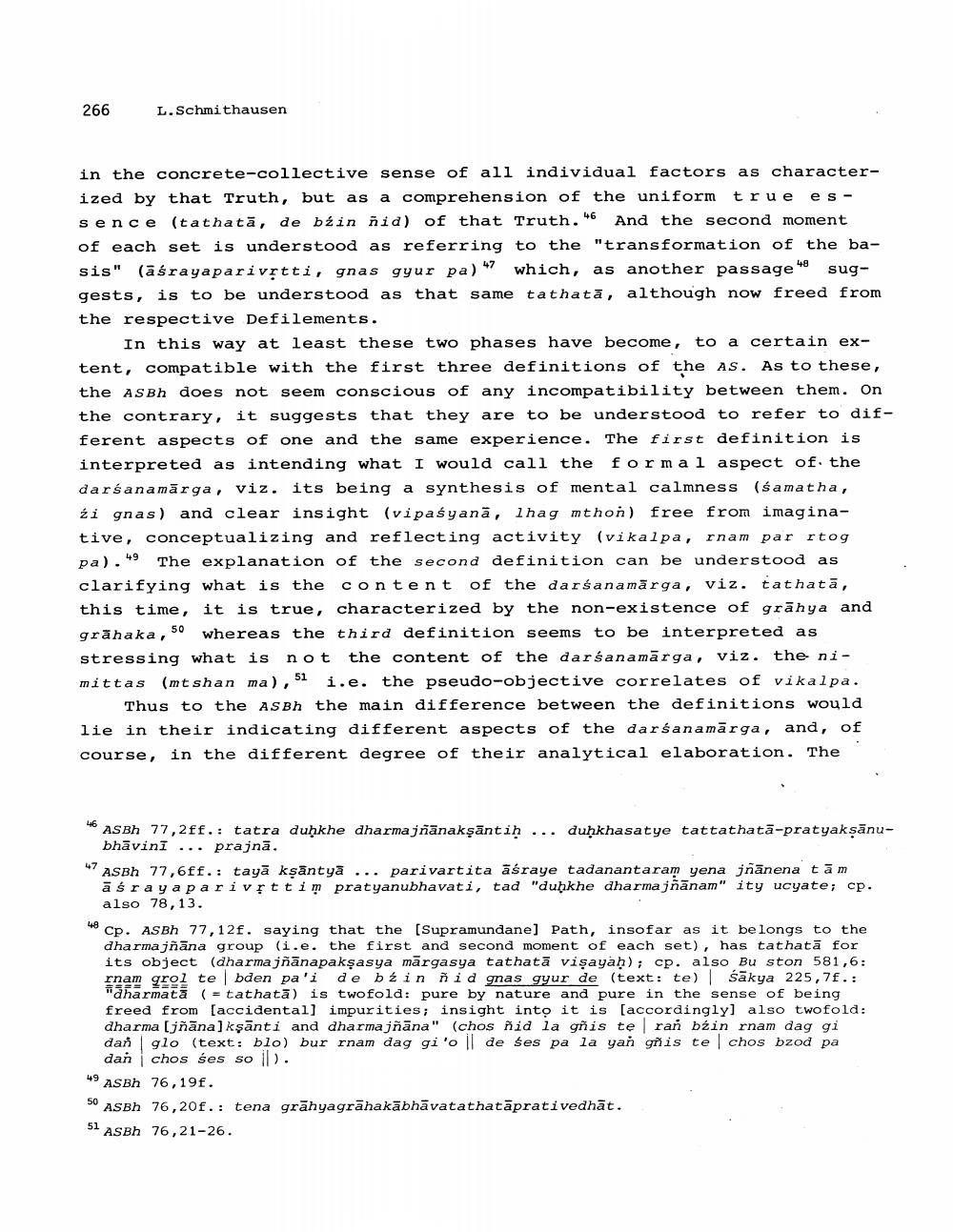________________
266
L. Schmithausen
in the concrete-collective sense of all individual factors as characterized by that Truth, but as a comprehension of the uniform true essence (tathatā, de bź in nid) of that Truth.46 And the second moment of each set is understood as referring to the "transformation of the basis" (āśrayaparivịtti, gnas gyur pa) 7 which, as another passage ** suggests, is to be understood as that same tathată, although now freed from the respective Defilements.
In this way at least these two phases have become, to a certain extent, compatible with the first three definitions of the AS. As to these, the Asbh does not seem conscious of any incompatibility between them. On the contrary, it suggests that they are to be understood to refer to different aspects of one and the same experience. The first definition is interpreted as intending what I would call the formal aspect of the darśanamārga, viz. its being a synthesis of mental calmness (śamatha, źi gnas) and clear insight (vipaśyanā, lhag mthon) free from imaginative, conceptualizing and reflecting activity (vikalpa, rnam par rtog pa). 49 The explanation of the second definition can be understood as clarifying what is the content of the darśanamārga, viz. tathatā, this time, it is true, characterized by the non-existence of grāhya and grāhaka, 50 whereas the third definition seems to be interpreted as stressing what is not the content of the darśanamārga, viz. the nimittas (mt shan ma), 51 i.e. the pseudo-objective correlates of vikalpa.
Thus to the ASBh the main difference between the definitions would lie in their indicating different aspects of the darśanamārga, and, of course, in the different degree of their analytical elaboration. The
** ASBh 77,2ff.: tatra duḥkhe dharmajñānakşāntih... duḥkhasatye tattathatā-pratyaksānu
bhāvini ... prajnā. 47 ASBH 77,6ff.: tayā kşantya ... parivartita āśraye tadanantaram yena jñānena tām āśraya parivịttim pratyanubhavati, tad "duhkhe dharma jñānam" ity ucyate; cp.
also 78,13. 48 CP. ASB 77,12f. saying that the (Supramundane] Path, insofar as it belongs to the
dharmajñāna group (i.e. the first and second moment of each set), has tathatā for its object (dharma jñānapakşasya margasya tathatā visayaḥ); cp. also Buston 581,6: rnam grol tebden pa'i de bź in nid gnas gyur de (text: te) | śākya 225,7f.: "dharmată (= tathatā) is twofold: pure by nature and pure in the sense of being freed from [accidental) impurities; insight into it is [accordingly] also twofold: dharma (jñāna) kşānti and dharma jñāna" (chos ħid la gñis te ran búin rnam dag gi dan glo (text: blo) bur rnam dag gi'o ll de ses pa la yan gñis techos bzod pa
dan chos ses so il ). 49 ASBH 76,19f. 50 ASBH 76,20f.: tena grāhyagrāhakābhāvatathatāprativedhāt. 51 ASBH 76,21-26.




